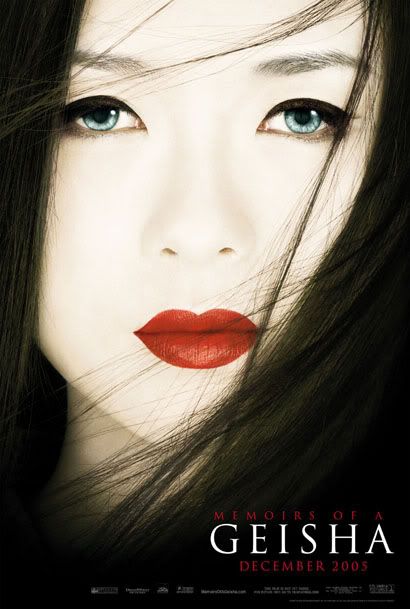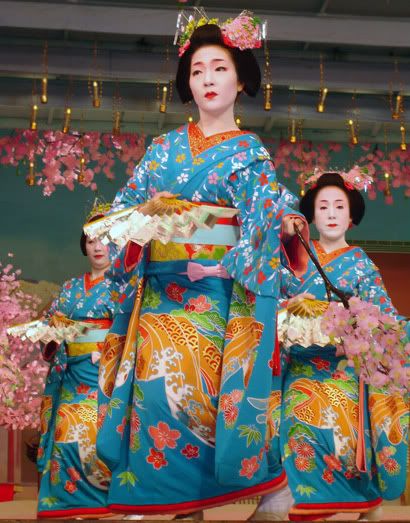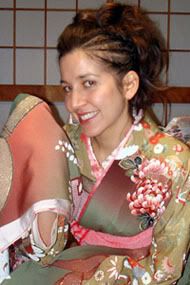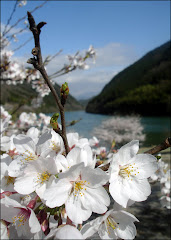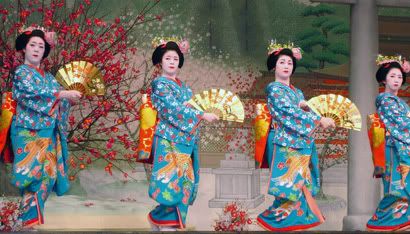 Miyako Odori, the spring dance of the Geisha and Maiko of Gion.
Miyako Odori, the spring dance of the Geisha and Maiko of Gion.
I can`t say that the Miyako Odori is something that I have wanted to see ever since I was a child...The truth is that I had no idea such beauty existed in the world. But ever since the first time I saw a Geisha slip out of a tea house in Gion and float gracefully down the cobbled streets like a white heron flying in the black of night, illuminated for only a moment by a ray of moonlight, I have been haunted by their ethereal beauty.
One of the most captivating dancers. 
The Miyako Odori, which literally translates as the "Dance of the Capital", began in 1872, after the Capital was moved from Kyoto to Tokyo (during the Meiji Restoration). Afraid that Kyoto`s long tradition as the cultural center of the empire would quickly deteriorate, the Governor decided to hold an exposition in the Imperial Palace, asking the owner of a famous Ocahya (literally a tea house, but more specifically, a place where Geiko and Maiko entertain), to show a dance by a Geiko and a maiko to the public with the help of the master of Kyomai (Kyoto style of dance). Before then the maiko and geiko of Gion had never performed together as a group.
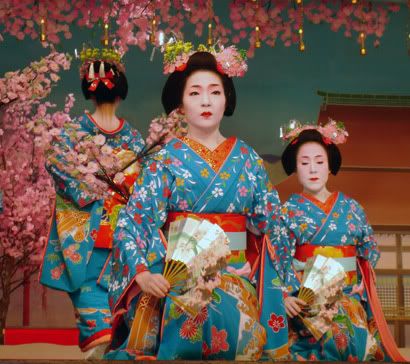 Note the special marking on the neck of the maiko in the background.
Note the special marking on the neck of the maiko in the background. 
An excerpt from the 1933 Miyako Odori program:
It goes without saying that, in our classical capital of over a thousand years, the veritable queen of the spring attractions, natural as well as artificial, is no doubt the Miyako Odori or Cherry Dance reputably known not only at home but throughout the world. Soaring amidst the various floral shows of the season, it is fascinatingly admired as the most beautiful sight of this fairyland. No wonder that it yearly attracts countless numbers of visitors, regardless of sex, age and classes, from all parts of the Empire.
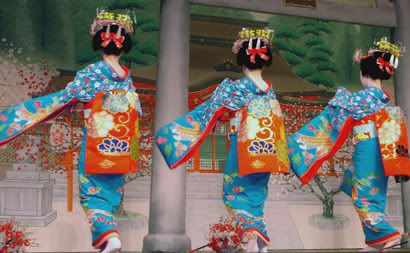
The long sleeves of the Miako's kimono accentuate the simple and graceful movements of the highly refined Kyoto style of dance.
Ok. To be fair, there is no way that I could have been disappointed by this dance. If I even see one geisha or maiko walk down the street i get super excited. I have been known to break into a full sprint in an attempt to get a better view (or photo) even while wearing furisode kimono and zeta (formal Japanese sandals). Needless to say, being in a theatre full of them, with an amazing set, beautiful kimonos and traditional koto, shamisen and singing (all done by the girls themselves) equals one happy me minus all the running (which actually makes me even happier)! Even though I lost my breath every time I saw a maiko or geiko in Kyoto (not from running after them, just from their breath-taking beauty) I coulnd never have imagined how captivating, enchanting, and inspiring their perfomance would be. But how quickly it seemed to end, like a beautiful dream that fades away the moment you open your eyes.
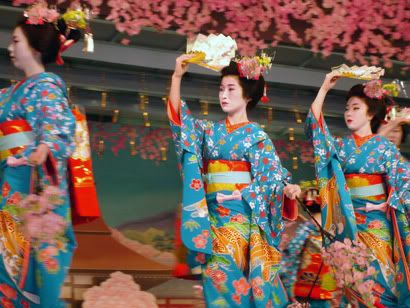
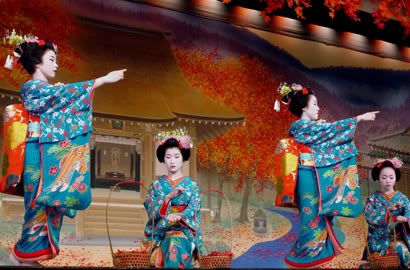 Maiko of Gion, the opening show of Miyako odori, April 1st.
Maiko of Gion, the opening show of Miyako odori, April 1st. As soon as I found out my mother and brother were coming to visit me (did I even mention that yet?) I knew I had to figure out a way to introduce them to the phenomena that is the geisha. I called and made reservations for the tickets 2 months in advance and made my mother promise to read Memoirs of a Geisha, by Aurthor Golden, just to give her a little background understanding of the Flower and Willow World. My brother was very skeptical about the whole thing. I don't think he was thrilled when I told him we were going to watch geiko and maiko dance. He may have been slightly more interested in seeing sumo, or something more 'manly'.
The exact opposite of sumo.
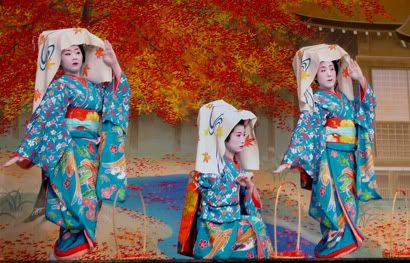
The beauty of fall in Kyoto. A scene from the Miyako odori performed by Gion`s most accomplished maiko.
Ofcourse once the show started I don't think there was anywhere else he'd rather have been. Our seats were amazing, second row back left of center, which means we were with in reach of the hanamichi, or flower path. The hana michi is a Japanese theatrical convention that allows performers to enter the stage by narrow paths that run along the sides of the audience. My brother was sitting next to some maiko's client, who proceeded to pull out his cell phone, showing my brother pictures of the two fo them together. When the lights dimmed, the curtains were raised on the sides of the hanamichi revealing a hidden orchestra. On the far side of the theatre, very old geisha began to pluck away at their shamisens. On our side the curtains lifted to reveal beautiful young maiko, who began to shout "Miyako Odori wa Yoiyasa!" (Welcome to Miyako Odori)! Some of them played Japanese flutes, as did the maiko that the man next to my brother had come to see, while others beat on small japanese drums.
Then the dancers began to make their way down the hanamichi.
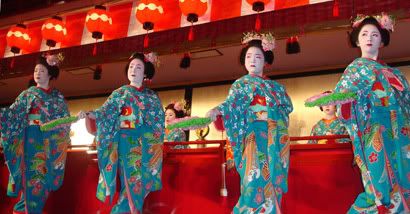
They were so close we could have touched them.
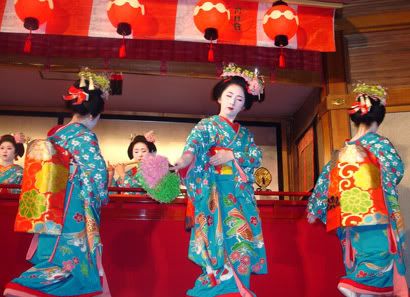
It was like the whole theater was one of those fantastic, old coockoo clocks! A huge Japanese coockoo clock!
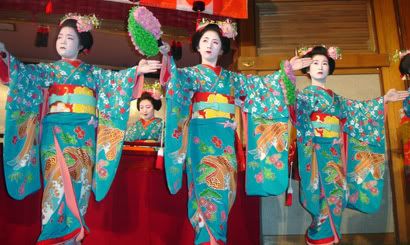
The maiko in the background being framed by the long sleeves of the dancers is the one the man next to my brother came to see.
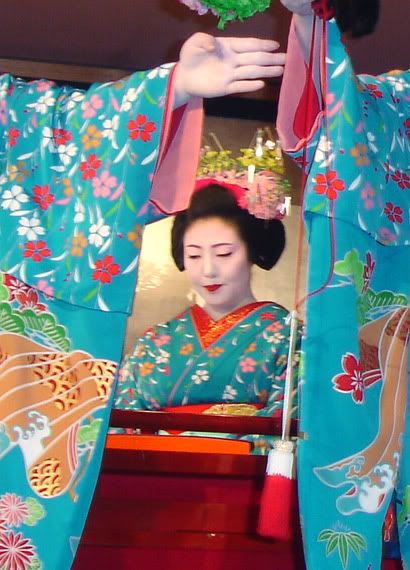
Its a little fuzzy, but that's her!
Before the show, two maiko actually performed a tea ceremony for the 'special' (special meaning paid the most) guests. From the moment you enter the room where tea is served, your eyes are drawn to them. Their beauty is not only physical, although some of the girls and geisha are strikingly beautiful. Its the way the way that they make every movement beautiful. They way they seem to hover between being a vision and being a reality. Through their mastery of the traditional arts, they actually become the art themselves.
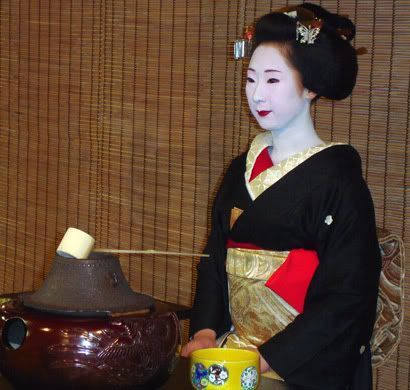
A maiko of Gion sits poised and still. Despite a whirlwind of photographers creating a lightning storm of flashes, she is unphased.
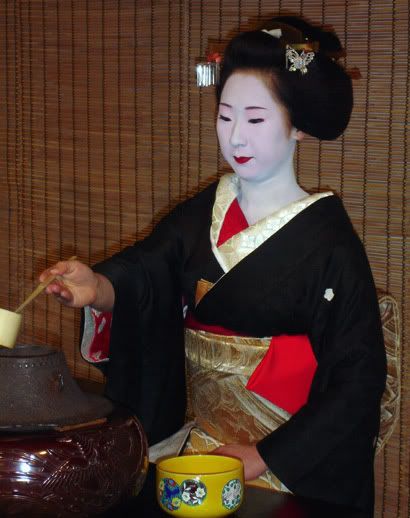
For most people, even Japanese, its very difficult to tell the difference between a Maiko and a Geiko. Many people think that Geiko only wear black and always wear a katsura, or especially styled wig. Maiko, like the woman above, do not wear wigs, like full fledged geiko, but have their own hair styled once a week. The woman above, however, is infact a geiko. Notice her white collar folded down to reveal a brilliant red. Although she has styled her own hair for the special occasion of performing the tea ceremony, this twist in her collar signifies that she is, indeed, a geiko.
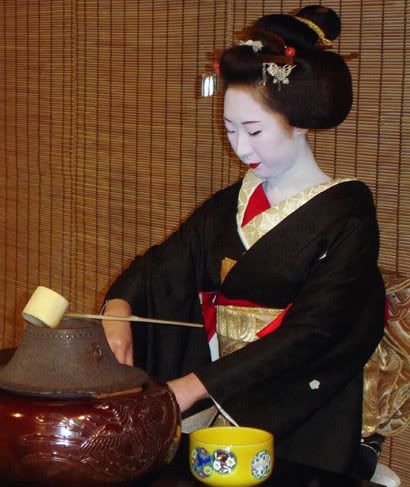
Tea is meditation. Every movement is diliberate. Tea bowls, like the yellow one above, are carefully chosen and can cost thousands of dollars.
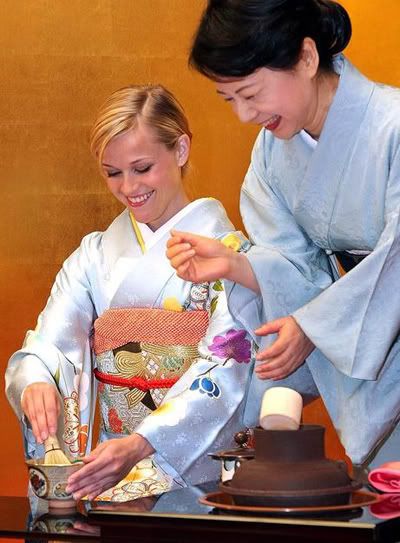
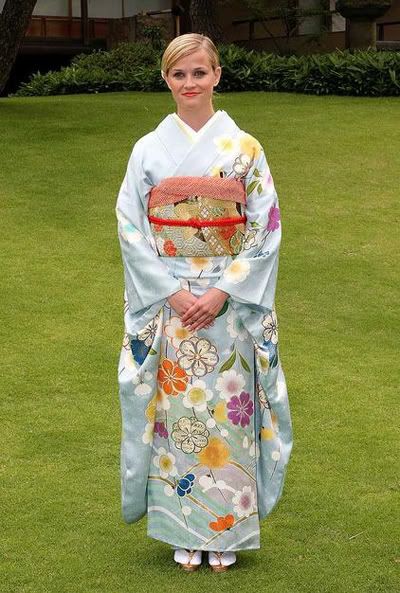












 Could they be any cooler? Maybe... If they were Shinigami! (^_<)
Could they be any cooler? Maybe... If they were Shinigami! (^_<) 








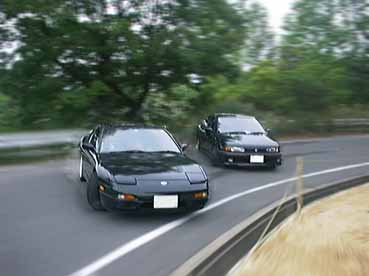



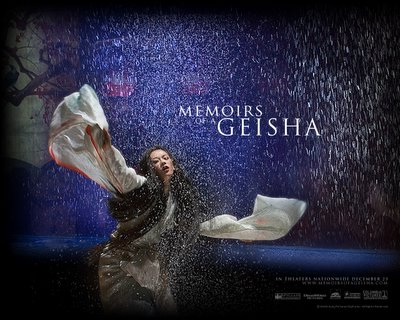




 Overall, the mediocre quality of this movie is due largely to the embarrassing screenplay. The strong performance of the actors give the streamlined script a subtlety and emotion that can be truly moving (the final scene is absolutely beautiful), but it could have been so much better...
Overall, the mediocre quality of this movie is due largely to the embarrassing screenplay. The strong performance of the actors give the streamlined script a subtlety and emotion that can be truly moving (the final scene is absolutely beautiful), but it could have been so much better...
